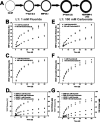Calcium Phosphate Delivery Systems for Regeneration and Biomineralization of Mineralized Tissues of the Craniofacial Complex
- PMID: 36652561
- PMCID: PMC9906782
- DOI: 10.1021/acs.molpharmaceut.2c00652
Calcium Phosphate Delivery Systems for Regeneration and Biomineralization of Mineralized Tissues of the Craniofacial Complex
Abstract
Calcium phosphate (CaP)-based materials have been extensively used for mineralized tissues in the craniofacial complex. Owing to their excellent biocompatibility, biodegradability, and inherent osteoconductive nature, their use as delivery systems for drugs and bioactive factors has several advantages. Of the three mineralized tissues in the craniofacial complex (bone, dentin, and enamel), only bone and dentin have some regenerative properties that can diminish due to disease and severe injuries. Therefore, targeting these regenerative tissues with CaP delivery systems carrying relevant drugs, morphogenic factors, and ions is imperative to improve tissue health in the mineralized tissue engineering field. In this review, the use of CaP-based microparticles, nanoparticles, and polymer-induced liquid precursor (PILPs) amorphous CaP nanodroplets for delivery to craniofacial bone and dentin are discussed. The use of these various form factors to obtain either a high local concentration of cargo at the macroscale and/or to deliver cargos precisely to nanoscale structures is also described. Finally, perspectives on the field using these CaP materials and next steps for the future delivery to the craniofacial complex are presented.
Keywords: biomineralization; calcium phosphates; craniofacial bone defects; dental decay; dentin; drug delivery; intrafibrillar mineralization.
Conflict of interest statement
The authors declare no competing financial interest.
Figures







Similar articles
-
Biomineralization of Collagen-Based Materials for Hard Tissue Repair.Int J Mol Sci. 2021 Jan 19;22(2):944. doi: 10.3390/ijms22020944. Int J Mol Sci. 2021. PMID: 33477897 Free PMC article. Review.
-
Biomineralization Precursor Carrier System Based on Carboxyl-Functionalized Large Pore Mesoporous Silica Nanoparticles.Curr Med Sci. 2020 Feb;40(1):155-167. doi: 10.1007/s11596-020-2159-3. Epub 2020 Mar 13. Curr Med Sci. 2020. PMID: 32166678
-
Translation of a solution-based biomineralization concept into a carrier-based delivery system via the use of expanded-pore mesoporous silica.Acta Biomater. 2016 Feb;31:378-387. doi: 10.1016/j.actbio.2015.11.062. Epub 2015 Dec 2. Acta Biomater. 2016. PMID: 26657191 Free PMC article.
-
Enzymatic Approach in Calcium Phosphate Biomineralization: A Contribution to Reconcile the Physicochemical with the Physiological View.Int J Mol Sci. 2021 Nov 30;22(23):12957. doi: 10.3390/ijms222312957. Int J Mol Sci. 2021. PMID: 34884758 Free PMC article. Review.
-
MV-mimicking micelles loaded with PEG-serine-ACP nanoparticles to achieve biomimetic intra/extra fibrillar mineralization of collagen in vitro.Biochim Biophys Acta Gen Subj. 2019 Jan;1863(1):167-181. doi: 10.1016/j.bbagen.2018.10.005. Epub 2018 Oct 10. Biochim Biophys Acta Gen Subj. 2019. PMID: 30312770
Cited by
-
Bioactive ceramic-based materials: beneficial properties and potential applications in dental repair and regeneration.Regen Med. 2024 May 3;19(5):257-278. doi: 10.1080/17460751.2024.2343555. Epub 2024 May 22. Regen Med. 2024. PMID: 39118532 Free PMC article. Review.
-
Applications of nanotechnology in orthodontics: a comprehensive review of tooth movement, antibacterial properties, friction reduction, and corrosion resistance.Biomed Eng Online. 2024 Jul 25;23(1):72. doi: 10.1186/s12938-024-01261-9. Biomed Eng Online. 2024. PMID: 39054528 Free PMC article. Review.
-
Unveiling the Potential of Nanoclays in Pharmaceuticals.AAPS PharmSciTech. 2025 Jun 10;26(5):167. doi: 10.1208/s12249-025-03157-w. AAPS PharmSciTech. 2025. PMID: 40495098 Review.
-
Nanoparticles in Bone Regeneration: A Narrative Review of Current Advances and Future Directions in Tissue Engineering.J Funct Biomater. 2024 Aug 23;15(9):241. doi: 10.3390/jfb15090241. J Funct Biomater. 2024. PMID: 39330217 Free PMC article. Review.
-
Hybrid Hydroxyapatite-Metal Complex Materials Derived from Amino Acids and Nucleobases.Molecules. 2024 Sep 20;29(18):4479. doi: 10.3390/molecules29184479. Molecules. 2024. PMID: 39339474 Free PMC article. Review.
References
Publication types
MeSH terms
Substances
Grants and funding
LinkOut - more resources
Full Text Sources
Miscellaneous

